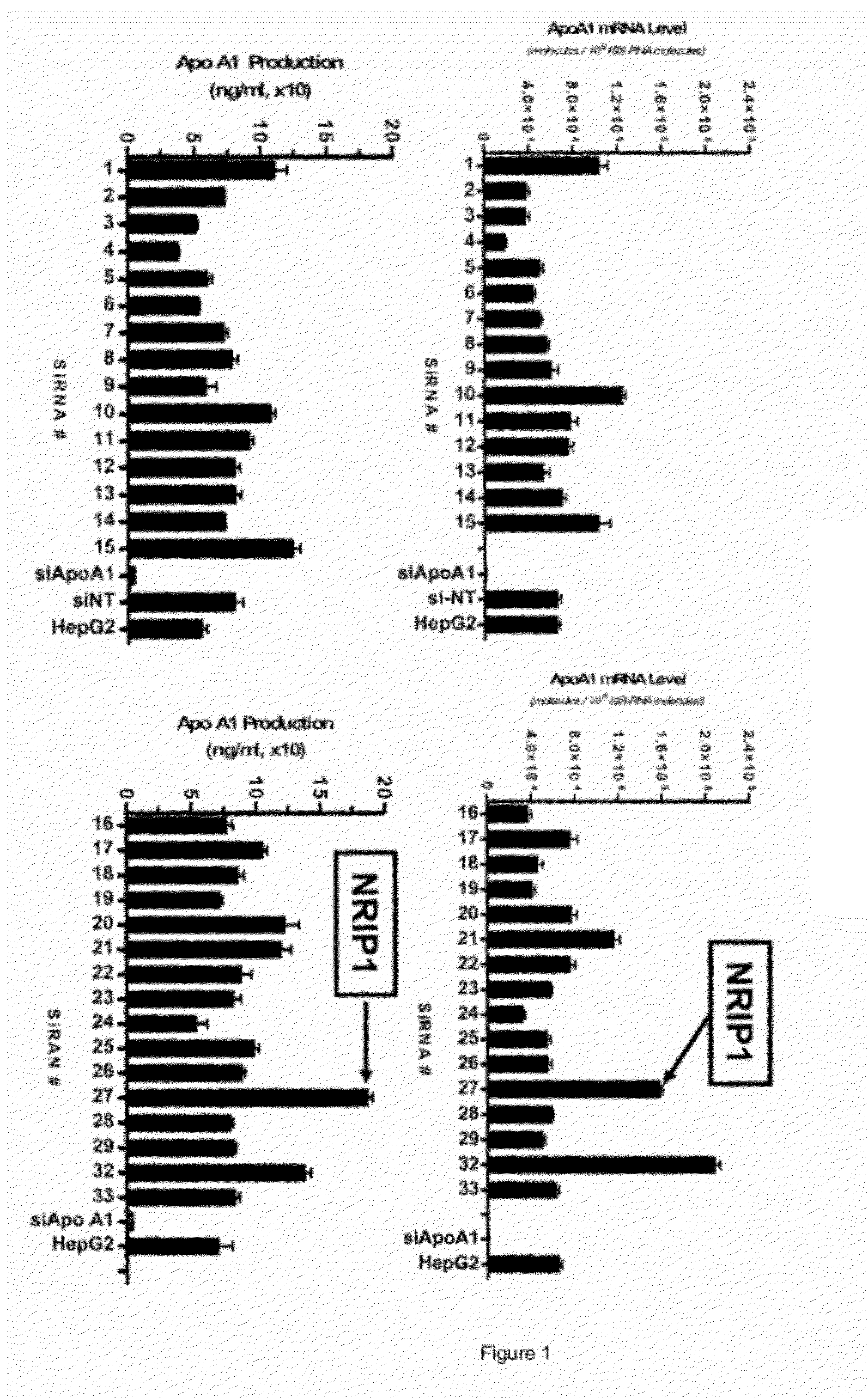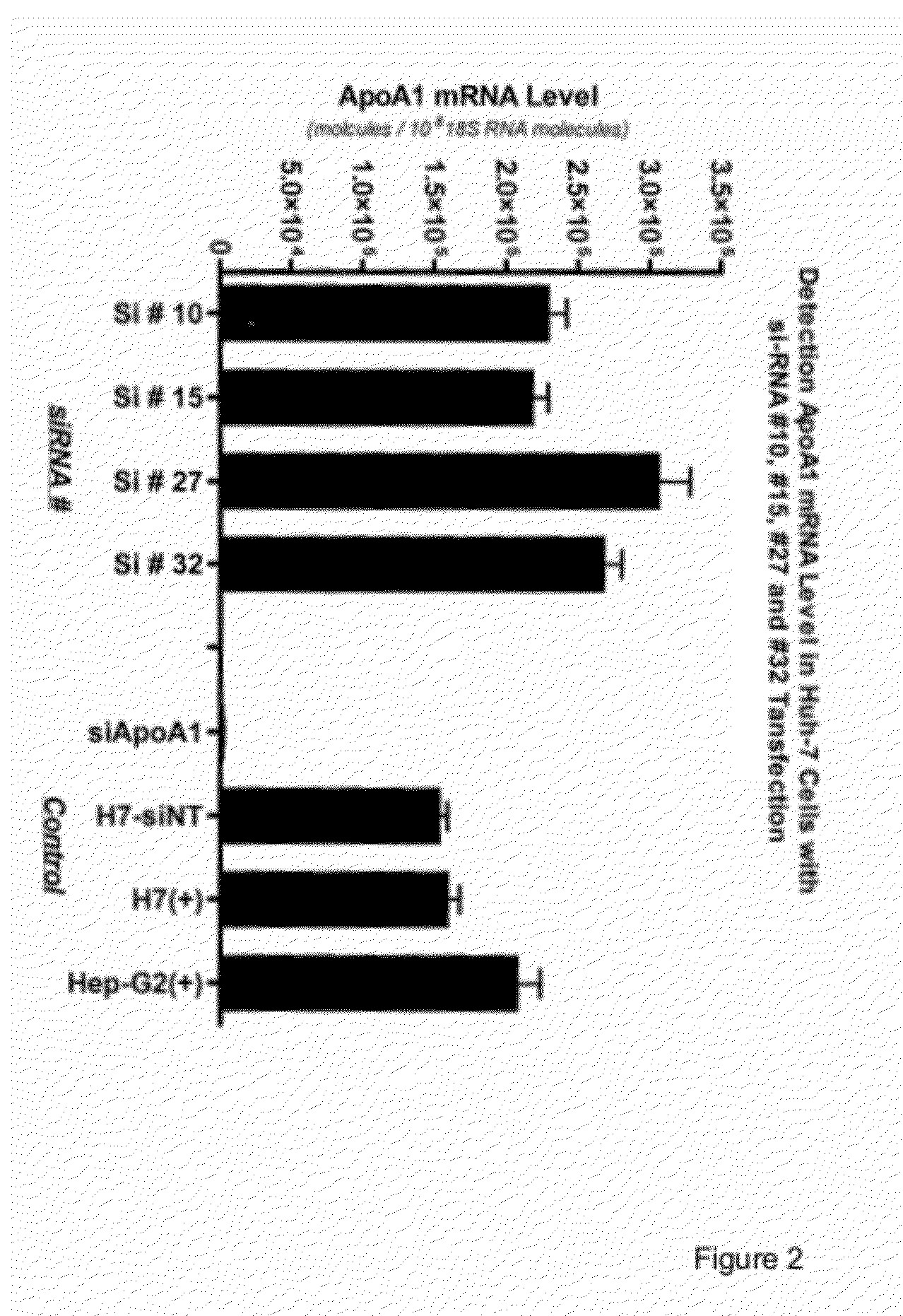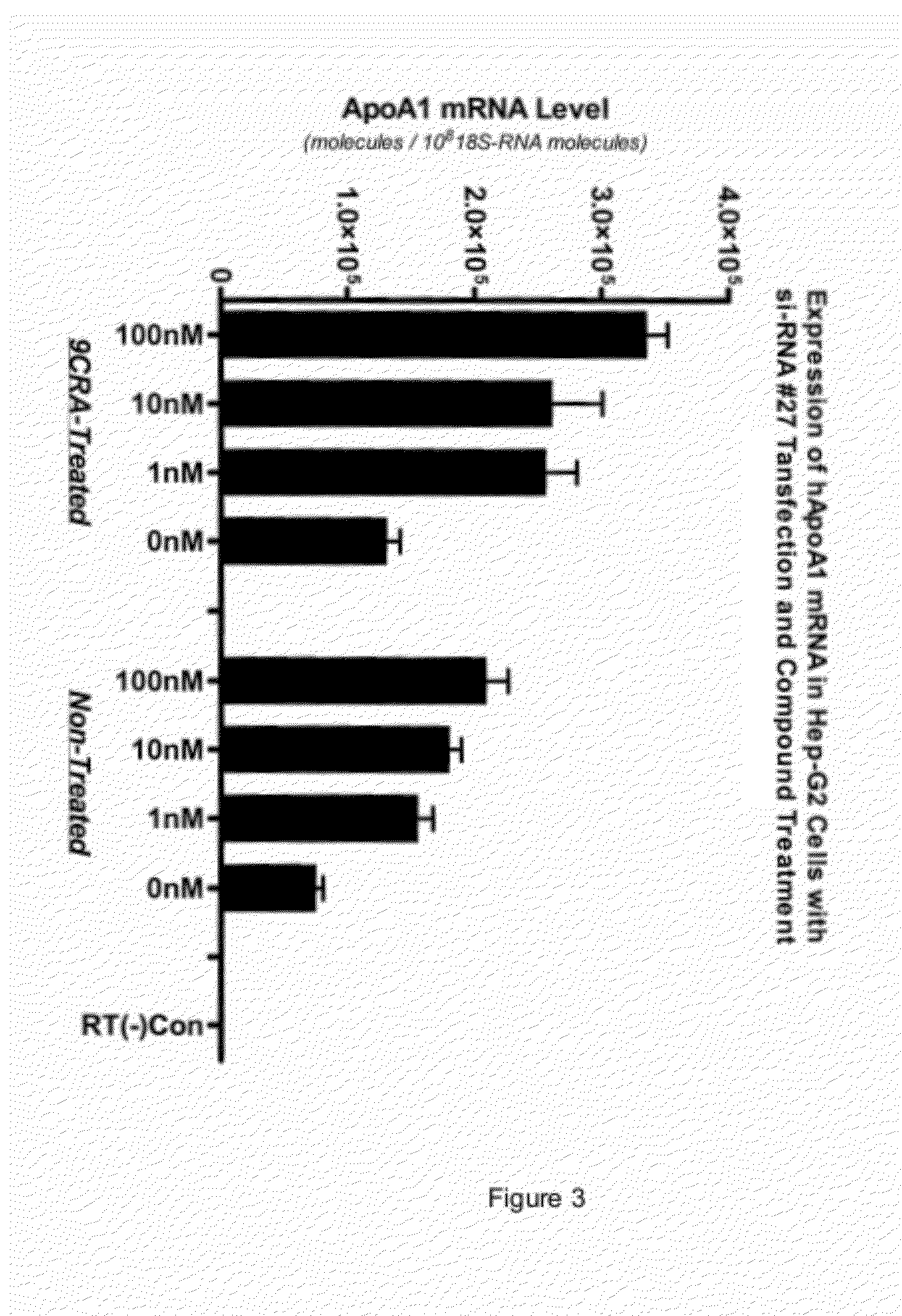NRIP1 regulation of apolipoprotein A1
a technology of apolipoprotein and nrip1, which is applied in the field of identifying therapeutic agents using nuclear receptorinteracting protein 1, can solve the problems of no drugs on the market, increased danger of heart attacks and strokes, etc., and achieves the effect of increasing apoa1 transcription or production, and reducing the expression or activity of an nrip1
- Summary
- Abstract
- Description
- Claims
- Application Information
AI Technical Summary
Benefits of technology
Problems solved by technology
Method used
Image
Examples
example 1
RNAi Functional Knockdown of NRIP1 Increases apoA1 mRNA and apoA1 Secreted Protein in Human Hepatocytoma HepG2 and Huh7 Cells
[0175]In this example, pools of 4 gene-specific siRNA molecules targeting 33 different transcription modulators were evaluated for their ability to increase apoA1 mRNA and apoA1 secreted protein in human hepatocellular carcinoma (HepG2) cells.
[0176]Pools of siRNAs that were targeted to NRIP1 (#27) and 32 other transcription modulators were transfected into cultured HepG2 cell along with experimental controls apoA1 siRNA (siApoA1), siRNA non-targeting control (siNT) and transfection media without siRNA (HepG2). For each transcriptional modulator, four independent siGenome ON-TARGET plus annealed duplex short interfering RNAs (siRNA) were pooled at equal molar concentrations. Each siRNA was designed and synthesized by Dharmacon to interact in a sequence specific manner with the target mRNA and suppress gene expression. For NRIP1, the following siRNA duplexes wer...
example 2
Increase of apoA1 Expression Through Loss of NRIP1 Functions Independently of the RXR Mechanism
[0189]The data in Example 1 demonstrated that HepG2 cells transfected with siRNA #27 led to an increase in both apoA1 mRNA and subsequent apoA1 secreted protein. This example examines the siRNA dose response in HepG2 cells in the presence of 10 μM 9 cis-retinoic acid (9CRA).
[0190]HepG2 cells were transfected with varying concentrations of pooled NRIP1 siRNA as described in Example 1, except that 24 hours post transfection 10 μM 9 cis-retinoic acid was added to the growth medium. Cells were harvested 24 hours later and apoA1 and NRIP1 mRNA levels measured as previously described. RT-qPCR was performed as described (Zhu et al., Analytical Biochemistry 345:102-109 (2005)) using the following NRIP1 specific primer / probes:
[0191]Forward 5′-TGCTACAGACCTATGTGTTAGGAA (SEQ ID NO: 20);
[0192]Reverse 5′-CAGTGCTGATCAACTTCTACGC (SEQ ID NO: 21);
[0193]Probe 5′-CTCCTCCT (SEQ ID NO: 22).
[0194]FIG. 3 showed t...
example 3
Treatment with Individual NRIP1 siRNAs Results in Decreased NRIP1 Target mRNA and Increased apoA1 mRNA
[0198]The data described in Example 1 showed that transfection with a pool of 4 to siRNA molecules targeted to NRIP1 resulted in an increase in apoA1 mRNA level and apoA1 protein production as compared to the level observed in control cells (FIG. 1). We next investigated the NRIP1 inhibitory effect of the individual NRIP1 siRNAs in HepG2 cells.
[0199]HepG2 cells were transfected with four individual NRIP1 siRNA duplexes at a concentration of 100 nM or a pool of all four siRNAs at a final concentration 100 nM following the protocol previously described. Following isolation of total RNA, RT-qPCR was performed for apoA1 and NRIP1 gene expression. FIG. 5 compared apoA1 mRNA gene expression for siRNA samples to the siNT and lipid controls. In FIG. 6, expression levels of NRIP1 gene expression were similarly evaluated. The data revealed that the individual siRNA duplexes had varied potency...
PUM
 Login to View More
Login to View More Abstract
Description
Claims
Application Information
 Login to View More
Login to View More - R&D
- Intellectual Property
- Life Sciences
- Materials
- Tech Scout
- Unparalleled Data Quality
- Higher Quality Content
- 60% Fewer Hallucinations
Browse by: Latest US Patents, China's latest patents, Technical Efficacy Thesaurus, Application Domain, Technology Topic, Popular Technical Reports.
© 2025 PatSnap. All rights reserved.Legal|Privacy policy|Modern Slavery Act Transparency Statement|Sitemap|About US| Contact US: help@patsnap.com



